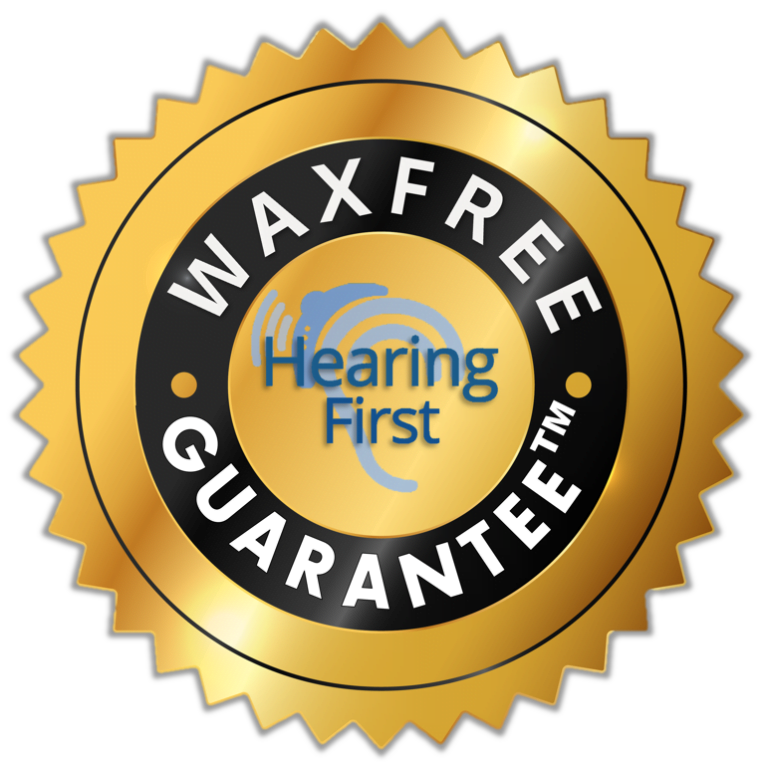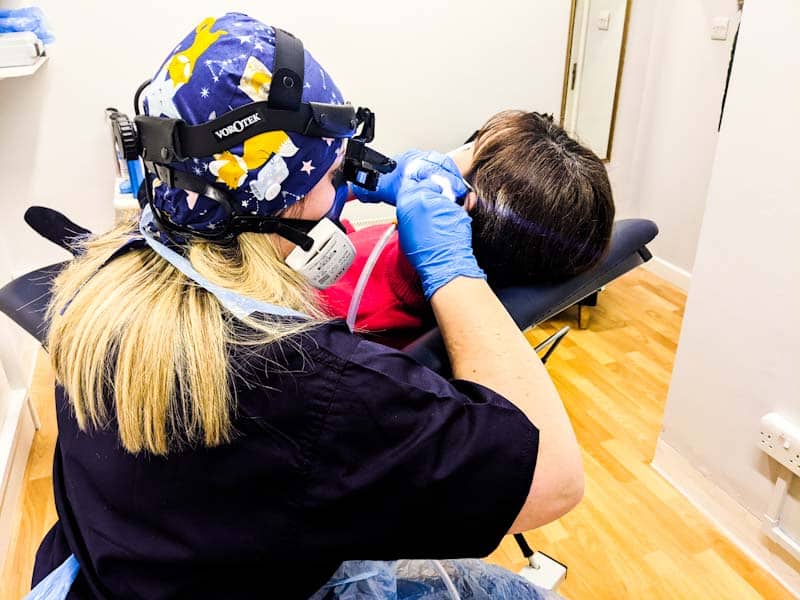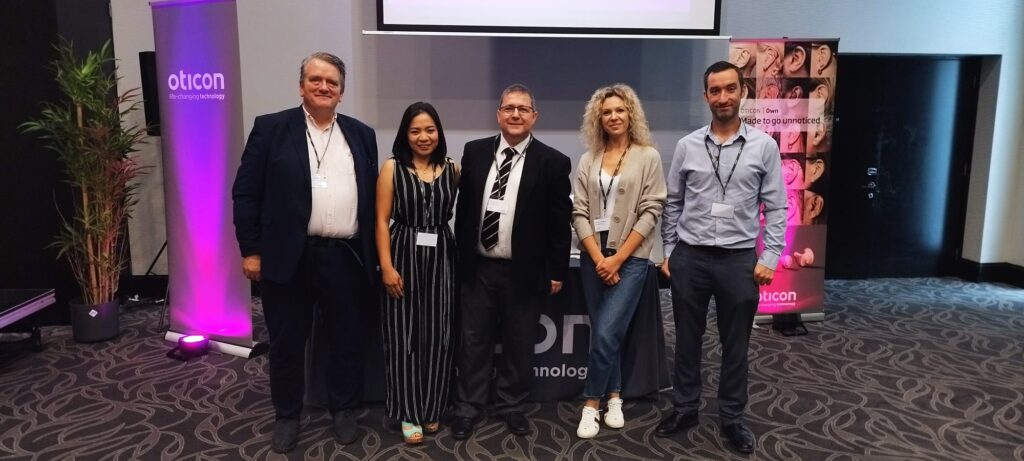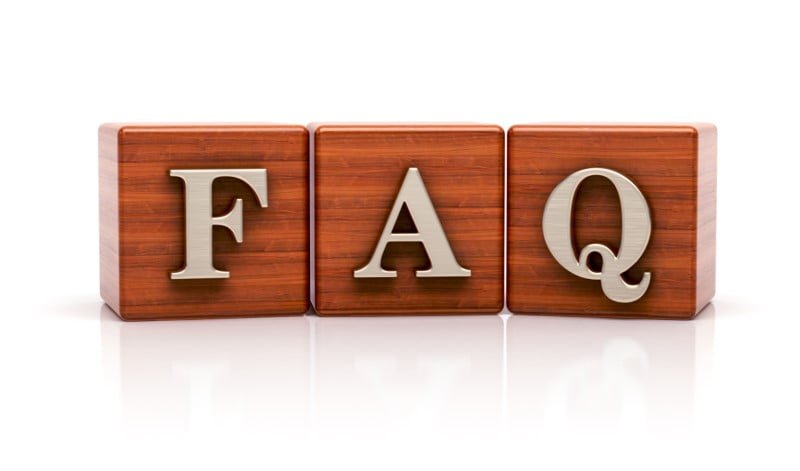Hearing First Finchley – Ear Wax Removal Using Microsuction
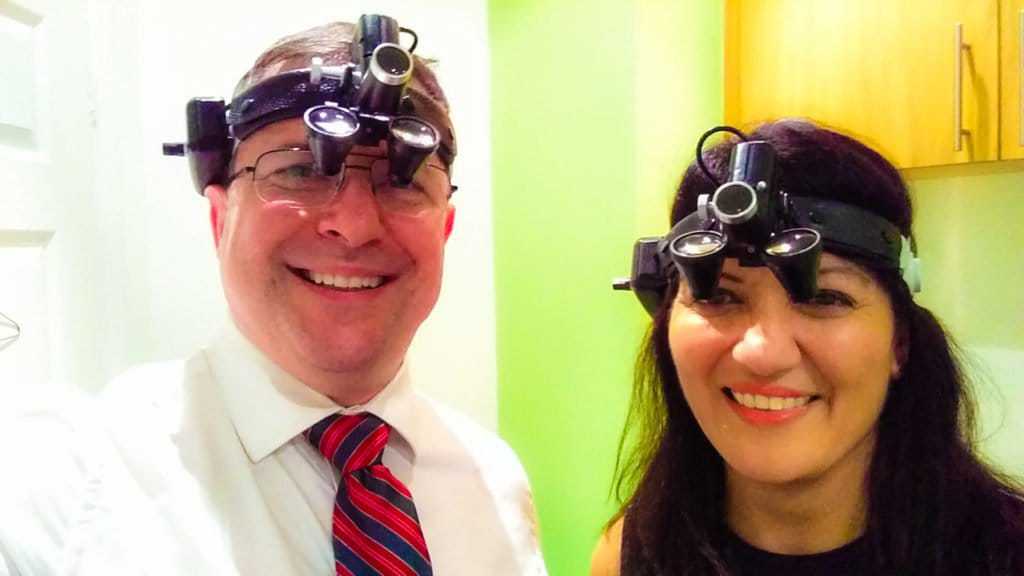
Expert Microsuction Ear Wax Removal In Finchley, London N3
The only specialist microsuction ear wax removal clinic in Finchley providing Microsuction Ear Wax Removal and Manual Instrument Earwax Removal by our expert earwax removal practitioners. All of our ear wax removal practitioners are hand-picked by our founder, Jason Levy. We really are the earwax removal specialists!
Our convenient location in Finchley provides ear wax removal services for clients in Finchley, Whetstone, Finchley Central, North Finchley, Hampstead Garden Suburb, Highgate, Hampstead, Hendon, West Finchley, Mill Hill East, Brent Cross, Cricklewood, Hornsey, Wood Green, Woodside Park, Inglis Barracks, Totteridge, Cockfosters and other parts of North London and can be found at:
Hearing First Finchley – Ear Wax Removal Using Microsuction
Address:
307 Regents Park Road, Finchley London, N3 1DPProfessional ear wax removal Finchley clinicians. Just 4 minutes’ walk from Finchley Central. We are the only clinic that offer The Hearing First Waxfree Guarantee™ , so if you have a blocked ear, come to our ear wax removal Finchley clinic. We really are the ear wax removal experts in Finchley.
Microsuction Ear Wax Removal Finchley Map
Video: What Happens In Your Ear Wax Removal Finchley Appointment
How Much Does Ear Wax Removal In Finchley Cost?
Pricing starts at £34 but can vary if it is one or two ears, at peak or off-peak times, and how far in advance the booking is made. Click here to check the most up to date prices
Frequently Asked Questions
Do you provide microsuction ear wax removal near me?
Yes, we do! We provide ear wax removal for clients in Finchley, Whetstone, Finchley Central, North Finchley, Hampstead Garden Suburb, Highgate, Hampstead, Hendon, West Finchley, Mill Hill East, Brent Cross, Cricklewood, Hornsey, Wood Green, Woodside Park, Inglis Barracks, Totteridge, Cockfosters and other parts of North London.
Click here to book microsuction now
I need ear wax removal using microsuction – do you provide this service?
Yes. All of our microsuction practitioners are trained, certified and insured to provide microsuction ear wax removal.
With 43 locations in London, Berks, Bucks, Cambridgeshire, Essex, Herts, Kent, Leicestershire, Norfolk, Oxfordshire, Suffolk, Surrey, Sussex, Staffordshire, Warwickshire, the West Midlands, Merseyside and Lancashire we’ve got you covered!
To book online, please click this link.
I need ear wax removal using manual instruments – do you provide this service?
Yes. All of our microsuction practitioners are certified, trained and insured to provide manual instrument ear wax removal, which is especially suitable for people who are very sensitive to loud noise.
With 43 locations in London, Berks, Bucks, Cambridgeshire, Essex Herts, Kent, Leicestershire, Norfolk, Oxfordshire, Suffolk, Surrey, Sussex, Staffordshire, Warwickshire, the West Midlands, Merseyside and Lancashire we’ve got you covered!
To book online, please click this link.
How must does ear wax removal cost?
Pricing can vary if it is one or two ears, at peak or off-peak times, how far in advance the booking is made, and by location.
Click here to check the most up to date prices for your location
My ears are very sensitive to loud noise. Is microsuction ear wax removal right for me?
If you find that moderately loud noise like a vacuum cleaner or hand dryer causes you physical pain, then microsuction may not be right for you. Instead, we would recommend manual instrument ear wax removal. Fortunately all of our practitioners are trained to offer manual instrument ear wax removal, which is especially suitable for people who are very sensitive to loud noise.
With 43 locations in London, Berks, Bucks, Cambridgeshire, Essex, Herts, Kent, Leicestershire, Norfolk, Oxfordshire, Suffolk, Surrey, Sussex, Staffordshire, Warwickshire, the West Midlands, Merseyside and Lancashire we’ve got you covered!
To book online, please click this link.
Do You Provide Microsuction Ear Wax Removal For Under 18s?
Yes: We provide microsuction ear wax removal for children aged 12-17 when accompanied by a parent or guardian.
With 43 locations in London, Berks, Bucks, Cambridgeshire, Essex, Herts, Kent, Leicestershire, Norfolk, Oxfordshire, Suffolk, Surrey, Sussex, Staffordshire, Warwickshire, the West Midlands, Merseyside and Lancashire we’ve got you covered!
To book online, please click this link.
Do You Provide Microsuction Ear Wax Removal For Under 12s?
Since the beginning of the Covid-19 crisis, we have unfortunately ceased to offer our service for under 12s.
How do you remove impacted ear wax?
If your ear has been examined by a doctor, nurse or Audiologist and your ear wax has been confirmed as being impacted, you should buy Waxsol from a Pharmacy and use it for two days before your procedure as advised in the patient leaflet. Otherwise we recommend that you use two squirts of Earol spray two to three times a day for at least three days before your procedure. When you come to your appointment, we will discuss any issues that may affect the procedure, examine your ear, then examine your ear with a portable ENT microscope. As long as it is safe to proceed, we will use gentle medical suction as well as specialist ENT instruments to safely and gently remove your impacted ear wax
To book online, please click this link.
Where can I get ear wax removal?
With 43 locations in London, Berks, Bucks, Cambridgeshire, Essex, Herts, Kent, Leicestershire, Norfolk, Oxfordshire, Suffolk, Surrey, Sussex, Staffordshire, Warwickshire, the West Midlands, Merseyside and Lancashire we’ve got you covered!
To find your nearest clinic and to book online, please click this link.
Do I need to soften my ear wax?
If you have confirmed soft ear wax, then you do not need to soften it as it is already soft. Also, if you have a perforated ear drum that has not healed, then you should not use ear drops before a microsuction procedure.
In every other case, pre-softening the wax is recommended: in “Aural microsuction for wax impaction: survey of efficacy and patient perception“, a significant finding was “Patients who had used cerumenolytics [ear drops or sprays] reported significantly less pain and vertigo [dizziness]”. Combining this important information with the study below (Suction-generated noise levels during aural toilet), we can conclude that patients should use 2 to 3 squirts of Earol spray (optionally with the addition of 3 glycerine drops 2 – 3 times a day) for at least 3 days prior to a microsuction procedure. Very hard impacted ear wax can also be softened with Waxsol used for two days prior to a microsuction procedure.
It is worth noting that there has been a recent review of various studies comparing the effectiveness of different types of ear drops. The conclusion is that no one brand of ear drop has been comprehensively shown to be better than any other. Nevertheless, we still recommend the use of Earol spray with the optional addition of glycerine drops as this has been shown to increase the comfort as well as reduce the chances of vertigo during a microsuction procedure.
We specifically recommend you do not use sodium bicarbonate or hydrogen peroxide ear drops: In a study called “Suction-generated noise levels during aural toilet“, noise levels were measured in the ear of an artificial model head using various suction tubes on different substances. It was noted that the suctioning of water generated very high levels of noise (over 130 dB(A)). For this reason we do not generally recommend the use of aggressive ear drops that contain sodium bicarbonate or urea hydrogen peroxide as it can make ear wax very watery, greatly increasing the noise level during the procedure. In addition, prolonged use of sodium bicarbonate ear drops can lead to an opportunistic infection of the ear canal (because sodium bicarbonate reduces the protective acidity level within the canal); and prolonged use of urea hydrogen peroxide drops can cause severe irritation to the skin surface in the ear canal in some people (hydrogen peroxide is bleach, after all).
To find your nearest clinic and to book online, please click this link.
On another website it says I don’t need to soften me ear wax. Why do you say it does?
We give research-backed reasons why you need to soften your ear wax in the above answer to “Do I need to soften my ear wax?”
Other websites say you don’t need to soften your ear wax because they want to get you through their door. If they then find that your ear wax is too hard, could you then be sure that they would stop and tell you that they weren’t entirely honest and you do actually need to soften your ear wax – and you’ll have to come back at another time?
We would rather be completely up front, outlining the benefits of pre-softening with Earol for you safety and comfort, as well as it greatly improving the chances of a successful procedure.
To find your nearest clinic and to book online, please click this link.
Do you offer ear syringing or ear irrigation?
At the Hearing First Microsuction Ear Wax Removal Network we never syringe or irrigate. Instead, we use the far safer microsuction and manual instrument methods to remove ear wax.
Syringing was routinely offered in GP surgeries, and was largely replaced in the 1980s with electric ear irrigators. However, in a 2002 article (Removal of ear wax | The BMJ), the BMJ reported that ear syringing carries with it a high chance of complications: perforation of the ear drum, otitis externa, damage to the external canal, pain, deafness, vertigo, and tinnitus are all possible with syringing.
Syringing and irrigation is also contraindicated (not recommended) in case of current or previous ear drum perforation, ear infection, presence of a grommet, or a history of ear surgery, whereas microsuction can be safely used in these cases.
Microsuction is much safer than syringing, but requires a significantly higher level of training. All of our audiologists are hand picked and undergo additional training in advanced ear wax removal methods, giving us an unrivalled success rate of 99.8%.
To find your nearest clinic and to book online, please click this link.
Do you provide microsuction ear wax removal on weekends?
Currently we have no weekend service due to staff shortage. Are you an Audiologist who is skilled in ear wax removal? We want to hear from you! Email us at ku.oc.tsrifgniraeh@sreerac with your CV and covering letter.
-
Why should I book an ear wax removal appointment with Hearing First?

1. Hearing First are the only ear wax removal provider to offer our Waxfree Guarantee™.
2. At Hearing first, we directly employ all of our clinicians – we are not a referral service.
3. All Hearing First clinicians are Audiologists who specialise in hearing – we do not employ pharmacy assistants, podiatrists or beauticians.
4. Our clinicians are highly trained and undergo regular professional development training so that they are up to date in the latest developments in Audiology.
5. At Hearing First all of our clinicians use the Vorotek O-Scope to carry out the wax removal procedure. Unlike loupes, a video-endoscope or the Tympa system, the Vorotek O-Scope maintains depth perception right up to the ear drum, and is therefore much safer than other visualisation methods.
6. All Hearing First clinicians are trained to use the microsuction as well as manual instrument methods, which are the safest and most effective methods of ear wax removal. -
What are the four methods of ear wax removal?
The four methods of ear wax removal are:
1. Irrigation (aka syringing)
2. Endoscopic ear wax removal
3. Microsuction
4. Manual instruments -
Do you use all four methods of ear wax removal?
There are four types of ear wax removal, but while they are all effective in their own way, they are NOT equal in terms of effectiveness and safety. No method of ear wax removal is 100% safe, though some are safer than others, and the safety greatly depends on the fundamental training of the practitioner – does the practitioner have extensive training in the ear, or are they a beautician, podiatrist, pharmacy assistant or other non-specialist technician?
Irrigation: We have NEVER used irrigation, as it has historically had a high incidence of ear drum perforation. We refer to it as “spray and pray”, because during the procedure the ear drum and ear canal cannot be seen as the ear canal is full of water. The relatively high pressure water jet is supposed to be directed at the ear canal wall, but can inadvertently strike the ear drum. This is especially dangerous where there is an ear infection (which can sometimes be silent – i.e. the patient does not experience pain), as the ear drum can be weakened by the infection and be even more at risk of rupture.
Endoscopic: Our founder, Jason Levy, as well as two Audiologists formerly on our staff have thoroughly evaluated the endopscopic method for over a year. While it has the advantage of better visualisation compared to ordinary loupes, and is good for making YouTube videos, it has several disadvantages, namely:
The endoscope is 2.8mm wide, while the suction tube is 2mm wide. The combination of these instruments can make complete wax removal impossible in a narrow ear canal, as well as potentially being uncomfortable for the patient; the endoscope battery gets quite heavy after prolonged use causing the hand to shake, and is therefore not suitable for a wax removal clinic that runs all day; and most importantly, the image from the endoscope is in 2D and therefore gives the clinician no sense of depth perception, making the procedure less safe.Microsuction: We will tend to use microsuction where ear wax has been sufficiently softened. This is considered the safest method of ear wax removal and when performed using a fixed or portable ENT microscope (such as the Vorotek O-Scope) which provides depth perception up the the ear drum, is the safest method of removing ear wax which is close to the end of the ear canal. In the case of ear wax which is very deep, our clinicians will usually use a fine end, which reduces the cross-section of the suction tube by half, and therefore allows four times less air flow, reducing the noise level and making the procedure much more comfortable.
Manual instruments: We tend to use manual instruments where ear wax is too firm, too sticky, or where it is stuck to the walls of the canal. This tends to be the case when the Hearing First Waxbusting Protocol™ has not been followed, but provides an effective method of wax removal in the case where the ear wax has not been sufficiently softened. While our clinicians are highly trained in the use of manual instruments, the main drawback is that the patient will tend to feel some pressure as the instrument engages with the ear wax. This pressure is only temporary, and the relief when the wax is out of your ear and your can hear again is worth it!
In some instances our clinicians will use a combination of microsuction and manual instruments as the ear wax can vary in consistency – some of it will have been there for longer and some of it will have been softened more by the wax softeners that were used. Whichever method is used, as long as you have followed our Waxbusting Protocol™, with our Waxfree Guarantee™ we promise to remove your ear wax at the first appointment, or the second visit is free!

